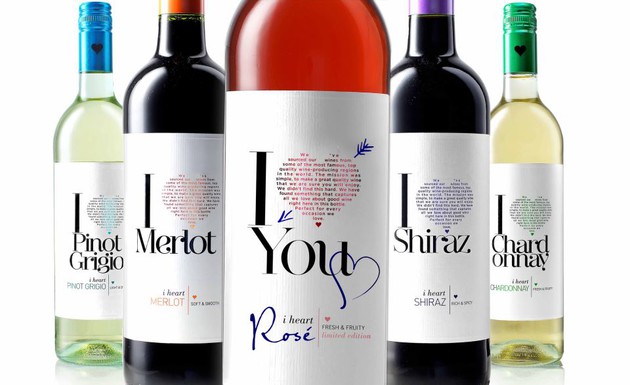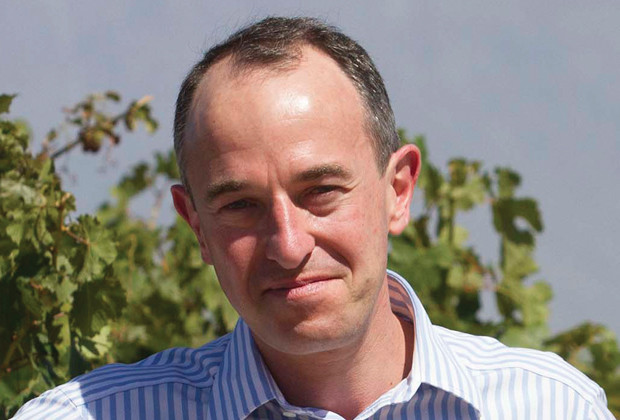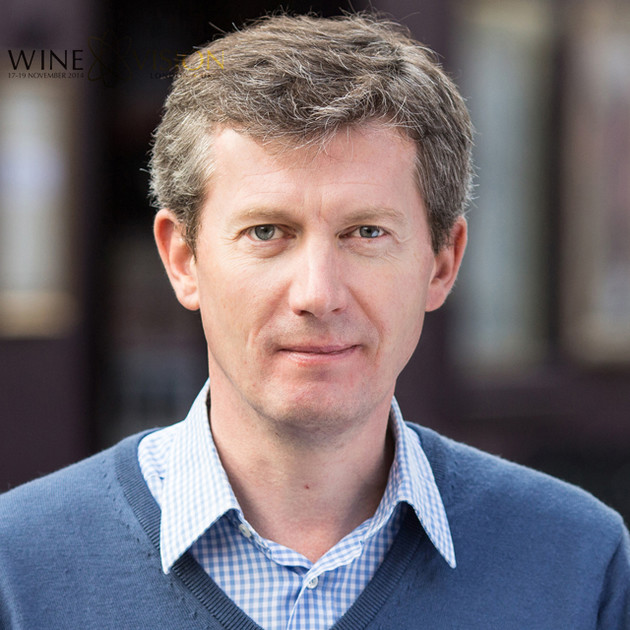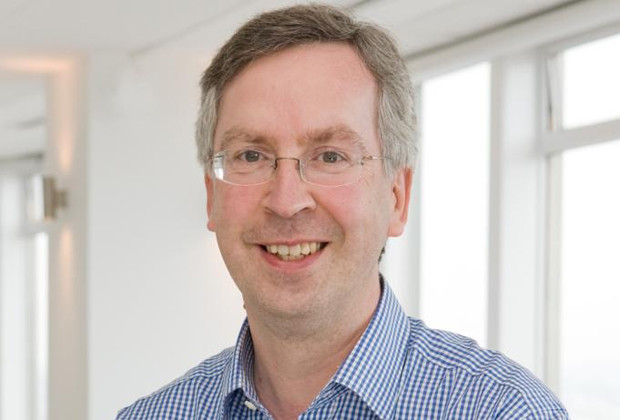Wine Vision Live News Blog: Wine has to talk more to young consumers says Wine Riot chief
The wine trade is missing out on marketing to women, with many brands pushing "condescending" butterfly or cupcake messages, says Tyler Balliet, founder of Wine Riot in the US.
Tuesday 6pm
The wine trade is missing out on marketing to women, with many brands pushing "condescending" butterfly or cupcake messages, says Tyler Balliet, founder of Wine Riot in the US.
 Tyler Balliet
Tyler Balliet
Balliet, who founded Second Glass in 2006 and launched the Wine Riot events five years ago after being frustrated with how younger people were being marketed to about wine, added that many in the wine trade had "overlooked" millennial consumers. "In six years time there will be 70 million millennials between the ages of 21 and 41 years old and they're going to buy wine."
Wine Riot hosts wine events across the US for 500 people at a time, in order to make wine fun for younger consumers. Over 20,000 people have attended its events.
The majority of attendees are female, aged 29.5 years, and 95% have a university degree. "Nobody is going after them, and the ones that are, are missing the boat," he said.
Balliet warned that millennials are "not going to grow into existing wine marketing" and the wine industry needs to change. Companies must change the language of wine, away from ostentatious technical speak and extravagant food pairings to fun experiences.
He called on the wine industry to come together more to sell wine as a whole, rather than each individual brand pushing its own message. He said producers are not doing enough to exploit the opportunity through Wine Riot events and engaging with consumers through social networks.
"Milennials - we're not that special, we're just different," said Balliet, pointing out how this is a generation "who don't know what the world's like without the internet".
He said that current Milennials view wine as a "consumable product", but that doesn't preclude them from enjoying high end wine.
Wine Riot started out of exasperation with established wine events which failed to offer an enjoyable experience, Balliet felt. "How do I take a huge room full of alcohol and make it boring?"
It has helped exhibitors build "more engaging" stands, added a DJ, dimmed the lights and issued fake temporary wine-related tattoos to lighten the mood. "They're fun and they send the message that this is clearly not a sophisticated wine event - they make people feel more confident."
It also came up with ideas to boost social media engagement - such as like having people get their photos taken with silly hats, then sharing them on Facebook. When people tag themselves they then get access to thousands of Facebook profiles. It built an app, allowing people to rank the wines with thumbs up, and it posted the results on screens in real time around the room. A total of 38% of people who attend used the app, with a further 80% checking back within one month to see what wines they liked.
Tuesday 5pm
The "I Heart" wine brand has the potential to become a true global wine brand that could be sold in any country in the world, according to Robin Copestick of brand owner, Copestick Murray.
He told today's Wine Vision conference in London that he had did not think "anyone would have the opportunity in his lifetime" to create a global brand with the scope of the I Heart brand.
 I Heart wine rangeI Heart wine range
I Heart wine rangeI Heart wine range
Since its launch in 2010 the brand is now in 18 countries, soon to be 21, and is sold across four continents. But he believes the best is still to come as the brand's "I Heart" concept allows it to move in numerous different directions be it through wine or by celebrating cities or events like it has with I Heart Brazil for this year's World Cup.
He believed the difference that I Heart has over other major wine brands is that allows consumers to express their "passion" they have for the brand, or the grape variety , like I Heart Pinot Grigio, rather than being a wine that is talking about itself.
"I heart wine is the consumer saying what it likes about the wine," he said.
Copestick told Wine Vision that the I Heart brand was devised at a difficult time in the company's history when it was faced with having to take greater control of its future after losing key business contracts.
The company tasked its staff to come up with new brand concepts and when then Copestick employee, Rachel Archer, passed a doodle with the I Heart Pinot Grigio written on it Robin Copestick likened it to a "light bulb" moment.
The brand was first launched in the US through its Cornerstone business and the success it got gave him and the business the confidence they needed to carry out consumer research and look to gain distribution in the UK.
Its initial success in the UK came through impulse section which he urged more in the wine trade to concentrate on. Multiple listings have followed in Tesco, Sainsbury's and Greene King and Copestick is now keen to widen UK distribution.
I Heart is now the second growing wine brand in the UK outside of multiple exclusives, it is the 15th biggest brand in the impulse market, and is fastest growing Pinot Grigio brand in the UK. All of which it has achieved without adopting a heavy price promotion strategy, stressed Copestick.
I Heart has worked hard to drive its profile with mainstream popular female consumer press rather than covet the traditional wine trade. It has concentrated on running lots of consumer competitions and promoting music and live events rather than look to be written about by the main wine critics.
But it is internationally which really excites Copestick as the I Heart concept relates to people who do not read or understand English, like in Asia and China.
4.30pm: Bordeaux's Les Sources de Caudalie to open second boutique hotel in Champagne
Bordeaux chateau Smith Haut Lafitte's spa tourism project Les Sources de Caudalie is opening a boutique hotel in the Champagne region in Spring 2016.
Jerome Tourbier, joint founder, said the project "could be developed in any wine region in the world", especially given it trademarked and patented the cosmetic brand and spa treatments. Only
"We have developed a unique know how - we're the only five-star Vinothérapie spa in the world and 100 room hotel project.
"We have developed the 'art de vigne' - wine regions are now very attractive."
He said the potential was great elsewhere - "as there are wealthy international travellers everywhere".
2pm
Global fine wine investment needs "visionary eye" says Moet Hennessey's Jean-Guillaume Prats
 Jean-Guillaume Prats, Moët HennessyJean-Guillaume Prats, Moët Hennessy
Jean-Guillaume Prats, Moët HennessyJean-Guillaume Prats, Moët Hennessy
You need a "visionary eye" in order to anticipate where best to invest in fine wine production, says Moet Hennessy chief executive of estates and wine Jean-Guillaume Prats.
Speaking at the Wine Vision conference earlier today, Prats told delegates that if creating a vineyard in a certain location "was feasible, it would have been done already". The company takes into account a complex list of factors before deciding where to plant.
This wide ranging list includes the weather, soil and access to water as well as having the correct root stocks in place. The banking and tax systems are also crucial to consider - how you will get your cash out. Economies like Argentina, with its 40% inflation, and South Africa, where the Rand is "a bit tricky" can influence decisions.
Political stability is a major deciding factor, with many companies investing substantial amounts in re-establishing vineyards in Lebanon and Syria where "today life is absolutely impossible".
The road system and logistics also plays a part - but Prats pointed out that often risks must be taken to find the right sites. Its Shangri La estate in south west China is quite inaccessible - it recently had to rescue drivers from the route.
It's important also to consider the expatriate life there - school and healthcare provision for example - as you have to be able to recruit winemakers to live there.
"You need a visionary eye and to anticipate trends," he said. "Who would have thought that Castel would be planting vineyards in Ethiopia or that Douro wines would come top in the Wine Spectator lists?"
Some factors that the most expensive wines have in common are their quality, the "face" behind the wine, its perception, the fact it can be hand-delivered, and limited local competition, as in the case of Yquem.
He explained that the Chandon concept is "very unique". "It's the only brand that has six origins, with common labels, processes and grapes. But we have to consider, do we want to sell one wine in the UK or all six? And do we want to export them? Should we get a South African Chardonnay to target Africa, or one made by the Crimean Sea for Russia?"
He also said that watching what other brands are doing, outside of the wine industry, is an important driver. "Nigeria is the number one market for Louis Vuitton clothes for men," he said.
He also warned that the industry must consider organic farming more. "Do we really want to be producing somewhere we need chemicals?".
You need a "visionary eye" in order to anticipate where best to invest in fine wine production, says Moet Hennessy chief executive of estates and wine Jean-Guillaume Prats.
Speaking at the Wine Vision conference earlier today, Prats told delegates that if creating a vineyard in a certain location "was feasible, it would have been done already". The company takes into account a complex list of factors before deciding where to plant.
This wide ranging list includes the weather, soil and access to water as well as having the correct root stocks in place. The banking and tax systems are also crucial to consider - how you will get your cash out. Economies like Argentina, with its 40% inflation, and South Africa, where the Rand is "a bit tricky" can influence decisions.
Political stability is a major deciding factor, with many companies investing substantial amounts in re-establishing vineyards in Lebanon and Syria where "today life is absolutely impossible".
The road system and logistics also plays a part - but Prats pointed out that often risks must be taken to find the right sites. Its Shangri La estate in south west China is quite inaccessible - it recently had to rescue drivers from the route.
It's important also to consider the expatriate life there - school and healthcare provision for example - as you have to be able to recruit winemakers to live there.
"You need a visionary eye and to anticipate trends," he said. "Who would have thought that Castel would be planting vineyards in Ethiopia or that Douro wines would come top in the Wine Spectator lists?"
Some factors that the most expensive wines have in common are their quality, the "face" behind the wine, its perception, the fact it can be hand-delivered, and limited local competition, as in the case of Yquem.
He explained that the Chandon concept is "very unique". "It's the only brand that has six origins, with common labels, processes and grapes. But we have to consider, do we want to sell one wine in the UK or all six? And do we want to export them? Should we get a South African Chardonnay to target Africa, or one made by the Crimean Sea for Russia?"
He also said that watching what other brands are doing, outside of the wine industry, is an important driver. "Nigeria is the number one market for Louis Vuitton clothes for men," he said.
He also warned that the industry must consider organic farming more. "Do we really want to be producing somewhere we need chemicals?".
11am
Consumers are now "risk adverse" warns Future Foundation
 Barry Clark
Barry Clark
Technology and changing society has made consumers increasingly "risk averse" and more conscious of their behaviour which has direct implications for the wine industry, according to Barry Clark of the Future Foundation.
He told Wine Vision that younger consumers, the so-called Generation Y, were far more cautious than older generations as access to smart technology has made them more aware of the consequences of their actions.
Sobriety in society was now becoming the norm, he added. Not just in the amount of alcohol people are drinking, but in their willingness to go out on a limb and do things they know are risky.
He pointed to the rise in the use of health monitoring mobile phone apps where people can track daily what they are eating and drinking.
Hence the emergence of retailers and businesses that give consumers effectively "curated lists" that consumers know they will like, often based on their own past shopping experience, where there is no risk in what they choose to buy.
This is best shown in how we choose to travel and go on holiday, stressed Clark. Nearly 75% of UK consumers will research thoroughly the locations where they want to go on holiday and how to get there before committing to going.
Yet the world of wine appears to offer an infinity of choices by comparison, he added. A search, for example, on the Sainsbury's website for "wine" comes up with some 796 options.
The Future Foundation has dubbed this change in consumers as the "end of adventure" where they will go out of their way to avoid being disappointed.
But there was still opportunity, said Clark, for retailers and wine businesses to "manage" consumer choices by offering them elements of surprise in what they are buying providing the environment is somewhere they feel comfortable in. Hence the website or retailer knows what it likes to allow them to "chance upon" apparently spontaneous choices.
The challenge for business is to be able to find the "algorithm of surprise" to attract consumers in.
This new "risk adverse" consumer means it is now far easier for governments to introduced legislation and measures that ultimately control the way we behave. Hence the constant flow of messages around problem drinking means it is easier for a government to introduce tougher drinking laws with little kick back from the consumer.
Clark also warned governments are now far quicker and open to the idea of introducing "controlling" measures that have been successful in other countries. Like the apparently successful anti tobacco packaging in Australia is now likely to be introduced in other western countries.
10am
Simon McMurtrie issues clarion call to the industry
 Simon McMurtrie
Simon McMurtrie
Simon McMurtrie, chief executive of Direct Wines, opened Wine Vision 2014 with a clarion call to the global wine industry to do all it can to get people to not only spend more on wine, but to buy a wider selection of wines.
In his role as chairman of Wine Vision 2014 McMurtrie pointed to the headline fact in the UK that 85% of wine is sold below £8 a bottle.
But he also pointed to the recent views of wine luminaries such as Jancis Robinson MW and Hugh Johnson who have said respectively that we are living in a "golden age of wine" and "an age of divergence". If everyone attending Wine Vision can do their part in making the most of this opportunity and encourage their customers to spend more on wine then the industry will be in a far more healthy position.
He said Wine Vision provided a unique position for people right across the global wine industry to come together and not only listen to the talks and debates but play their part, share experiences and go away with ideas they can implement in their own businesses.
Keywords:
- wine
- News
- Sectors
- Suppliers
- Wine Brand News
- Richard Siddle
- Gemma McKenna
- Wine Vision
- HWS - Richard Siddle




